Chandeliers in the living room interior, features of choice
A chandelier in the living room is an exquisite final touch that does not set the tone of the interior design, but emphasizes the beauty of the design idea. Well, or its disadvantages, if you miss the choice.
The content of the article
Which chandelier will fit into the living room interior
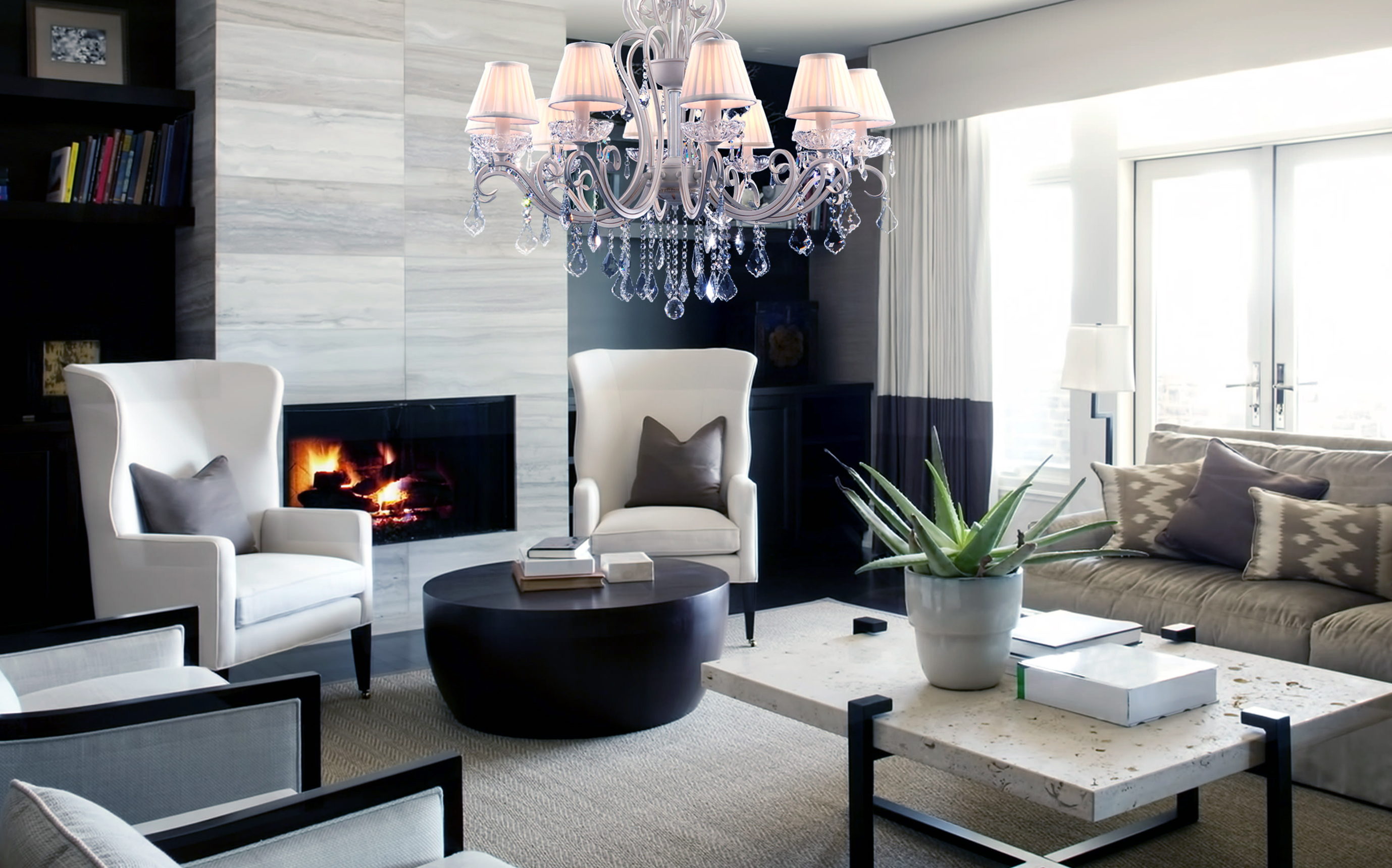
It’s hard to believe, but the queen of all sciences—mathematics—confirms her title even when solving problems with choosing a chandelier. Thanks to it, you can calculate the optimal size and type of lighting fixture. Moreover, it even helps to determine the required power and, accordingly, the type of lamps used.
Optimal chandelier size calculated based on the length and width of the room. To calculate the diameter of the lamp, you need to add the length of the living room (in meters) with its width, and multiply the resulting result by 10. The result of simple actions is the diameter of the chandelier, expressed in centimeters.
Example:
The length of the room is 6 m, and its width is 4 m. Therefore, the formula takes the form: (4 + 6) * 10 = 100. This means that the recommended diameter of the lighting fixture will be 1 m.
Important! The result of calculations is only a guideline, not an axiom. Therefore, a slight deviation in b is allowedOthe larger or smaller side. Safe limits for “adjustments” are ± 10% of the calculated value.
Chandelier type depends on the height of the ceilings. You should follow the general rule: the recommended distance from the floor to the bottom edge of the lamp is 2-2.2 meters.This means that ceiling chandeliers are better suited for a living room with low ceilings, while a height of 2.5-3 m makes it possible to choose an original pendant lamp.
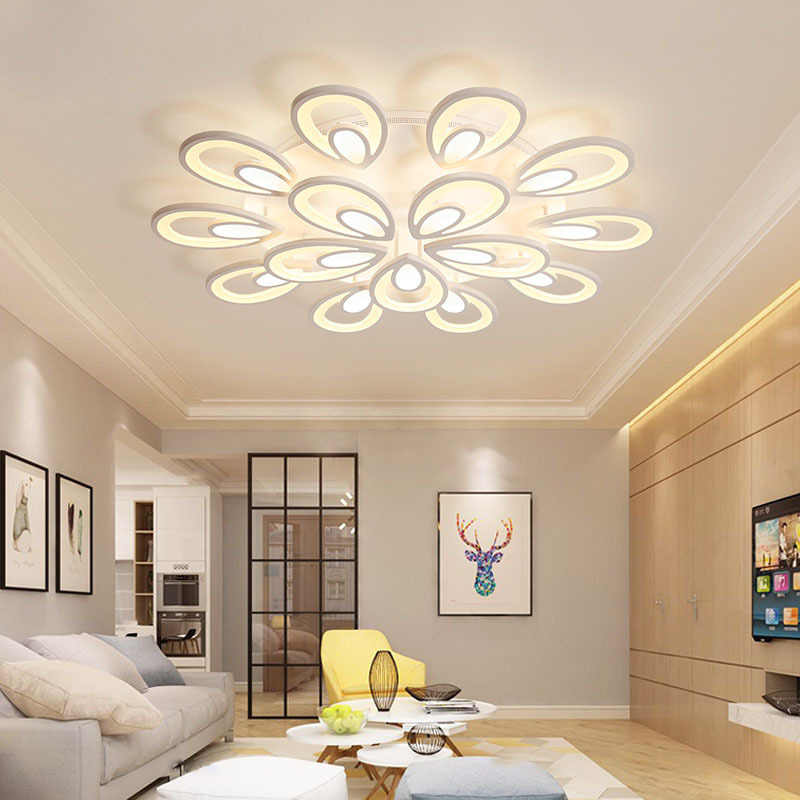
Chandelier power depends on the living room area and ceiling height. In addition, you will need to use an average constant, which for this room is 20 W per square meter. m, since the lighting in it should be intense.
The formula for calculating the power of a chandelier with ceilings up to three meters high looks simple: multiply the area by a constant.
Example:
The length of the room is 9 m, and its width is 5 m. Therefore, the formula takes the form:
9 * 5 * 20 = 900 (W)
Well, if the ceiling height is more than three meters, then the resulting value should be additionally multiplied by another 1.5. That is, with an area of 45 sq. m. you will need a chandelier with a power of 900 * 1.5 = 1350 W.
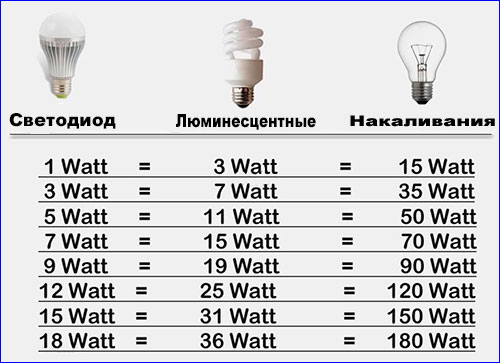
Important! All calculations were carried out for chandeliers with incandescent lamps. If you plan to use other light sources, then the obtained result is adjusted taking into account the equivalence tables. That is, the power of a lamp with fluorescent lamps will be five times less, and in the case of using LEDs, it will be ten times less than the calculated one.
Design tips and photos for inspiration
Mathematics helps determine the size. But, unfortunately, this is not the only component of a successful choice. Therefore, designers recommend paying no less attention to such parameters as the type of lighting, the tone of the glow, the complexity of the chandelier design, the color of the lampshade and the style of the interior.
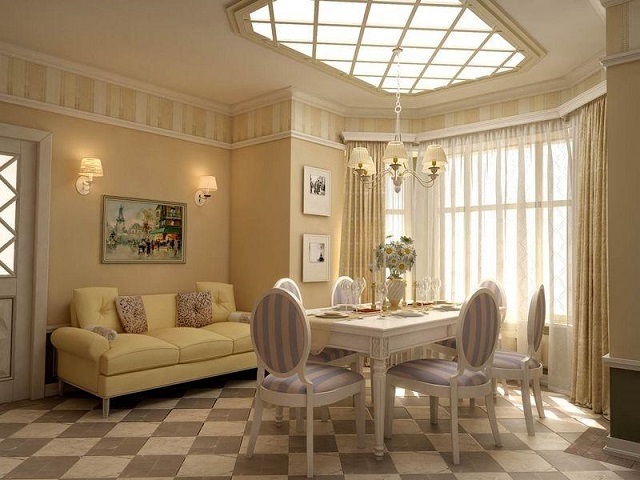
Lighting type selected depending on the goals pursued. Experts distinguish the following options:
- Directed - the luminous flux is directed to a certain area, beyond which there is twilight (or light from another source). All chandeliers with shades that provide a pronounced light spot fall under this description. Such lamps help to focus attention on the highlighted object, while simultaneously “covering” possible shortcomings of other areas.
- Reflected — the light flux is directed to the walls and ceiling. As a result, the living room “bathes” in repeatedly reflected rays, creating the illusion of transparency and weightlessness. This solution allows you to visually expand the space, but at the same time makes all defects in the walls and ceiling clearly visible.
- Scattered — uniform illumination by rays passing through the translucent lampshade, which has the highest efficiency. It can be called the “golden mean”, since chandeliers of this type allow you to hide minor defects in the renovation, without leaving areas of twilight.
- Mixed — combines several previous options, making it possible to play with the most successful interior solutions and look away from the mistakes made.

Light tone - no less important point. Having made the wrong choice, it is easy to get an alien effect - the eye will be drawn to the chandelier, seeming to be an alien from another world. To prevent this from happening, and to ensure that the design idea is fully revealed, you should be guided by just one simple rule: the tone of the light must match the prevailing shades in the interior.
The warmth characteristic of the classics does not go well with the cold bluish glow. And vice versa - the yellowish light of an incandescent lamp is extremely rarely appropriate in a modern minimalist interior.
Lamp color is also selected in strict accordance with the prevailing shades in the living room. In addition, in order to avoid color distortion, the chandelier is selected taking into account the spectrum of light emitted by the lamps.
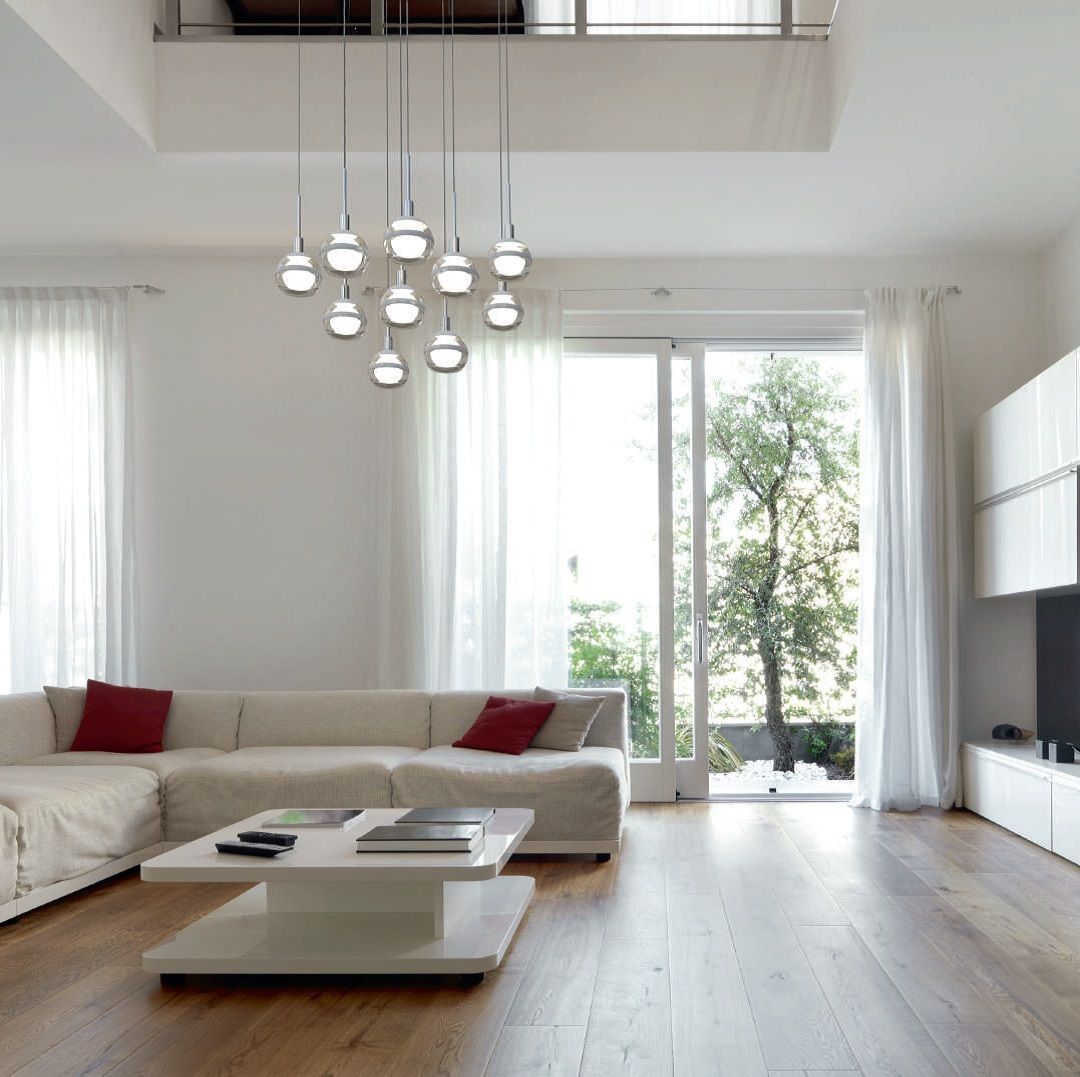
Design complexity chandeliers largely depend on the ceilings - the lower they are, the simpler and more laconic the design. But the opposite statement will not be true, since high ceilings are not always a direct indication of the use of complex forms. Therefore, if there is a large distance from the floor to the lighting fixture, it is worth starting from interior solutions.
Well, the main rule is your own taste. All of the above is just a guideline that allows you to cut off obviously unsuitable chandelier options. But the final choice is always yours, since it is you who most often will enjoy the interior of the living room.





